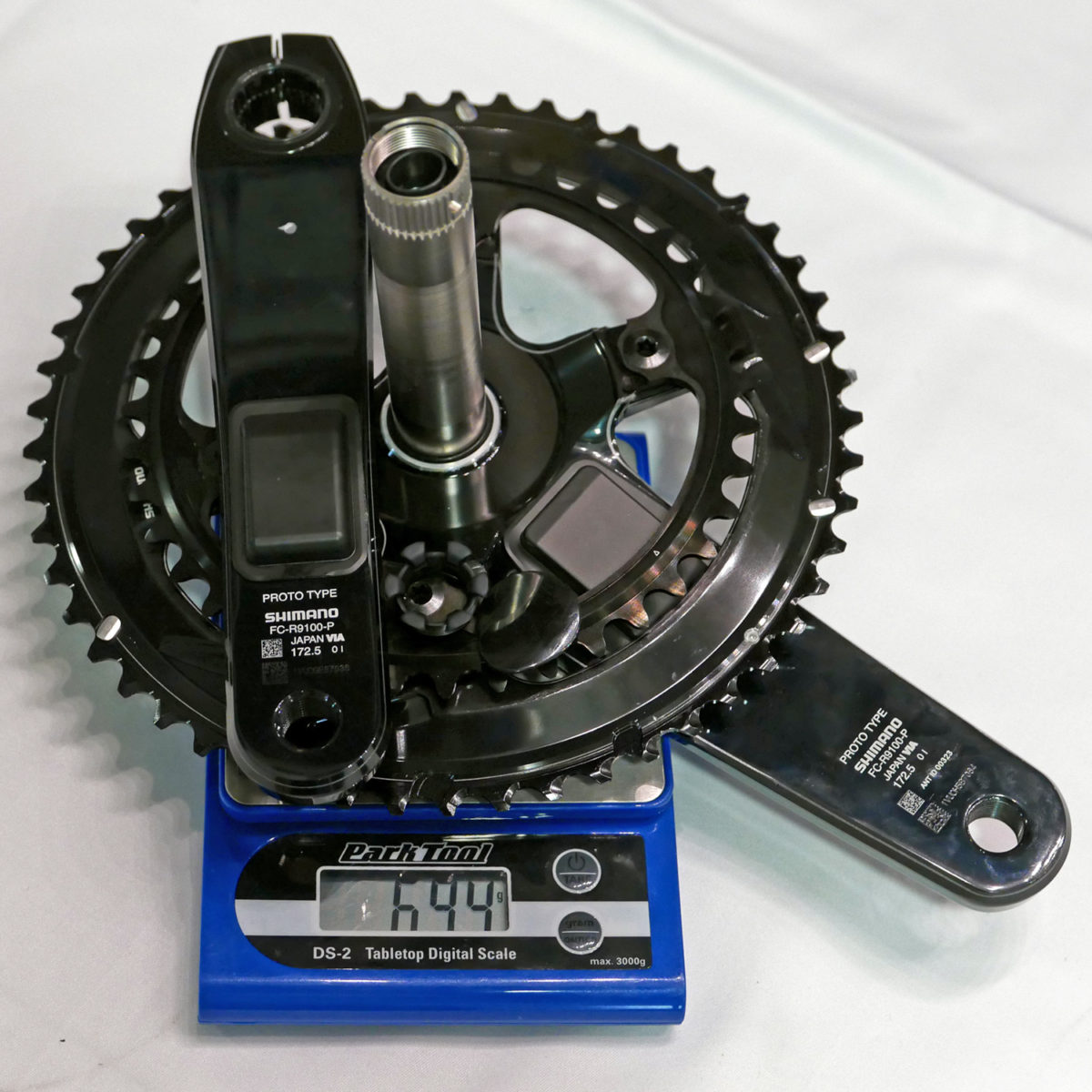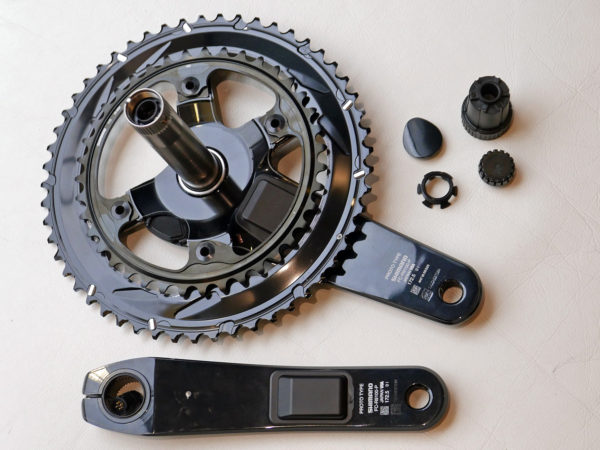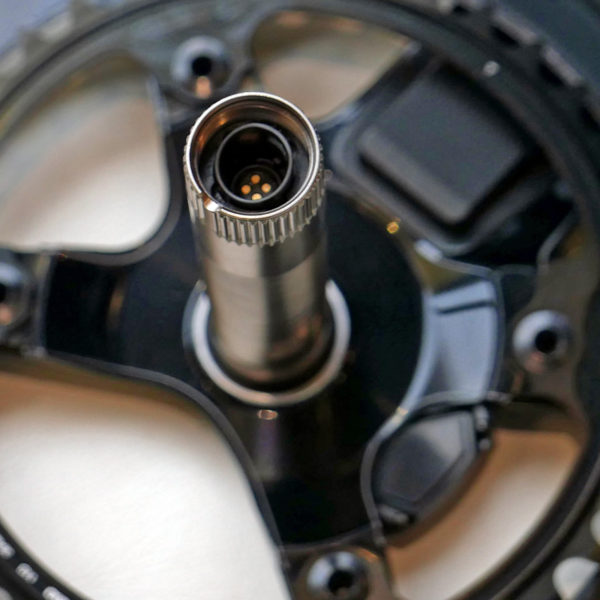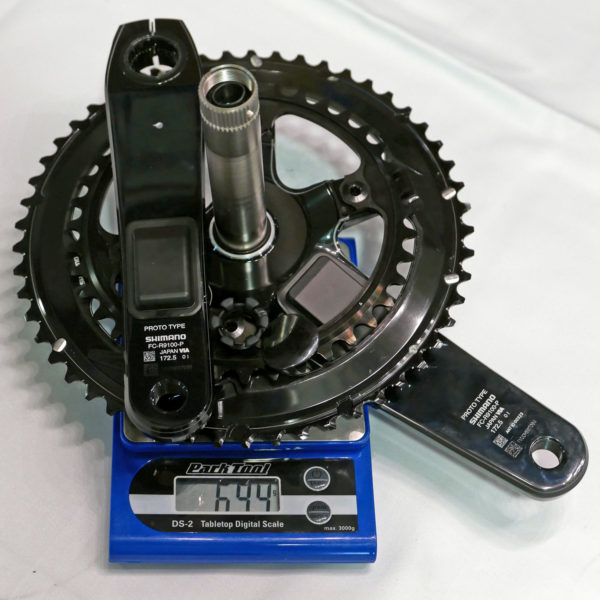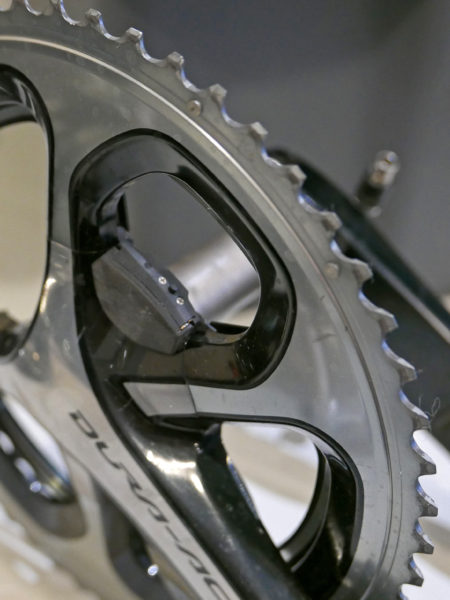
It has been difficult both to get ahold of the new Dura-Ace power meter crankset and to get more details on it. While the new R9100 series groupset was introduced all the way back last summer with various drivetrain and braking options, Shimano has had their hands full trying to keep up with production of all the different components encompassed in the next generation Dura-Ace. Out of the new group the dual-sided power meter crankset is the biggest new item for Shimano, as the rest is mostly evolutions of components they’ve been making for years.
The R9100 Dura-Ace power meter, however is all new. Made real through close cooperation with the Française des Jeux team, the first production power meters have started making their way out to the pros now. We had the chance to get a closer look, speak with its developers, and pull back the covers a bit to see what makes it tick. Plus, we have some actual weights and some early pricing figures…
Early rumors had suggested that the Shimano power meter was building on Pioneer technology, mostly based on the location of the small control box in between the crank’s spider. But in reality Shimano has been working on the power meter as one of their longest running internal development projects with their own in-house electronics engineers. And in fact, the Shimano solution is rather different in a few key ways with most of what you’ll see on the market.
Inside of the small black box on the right crank are the electronics for wireless communication and the sensor to pick up cadence from a magnet stuck onto the frame (as seen on the red bike above). The power meter uses ANT+ to communicate the power data to pretty much any cycling computer using the open platform. It also includes Bluetooth communication for setup when paired with Shimano’s mobile & tablet apps and for over-the-air firmware updates.
By tucking all of the electronics into the Hollowtech II arms, spindle, and few external boxes Shimano has made a system that they say is high on durability, even if it means that there is not really anything serviceable in it. Shimano promises to offer top-level support for users who buy the power meter cranks, but essentially said if there are ever any problems it would essentially be a (warranty) replacement issue. In order to deliver the waterproofness & durability, the sequencing of their manufacture is key and not even Shimano can get inside and modify anything once they are assembled.
While pretty much every dual-sided power meter on the market works by having two individually powered sides that communicate with each other wirelessly, the Dura-Ace is wired together to share a single rechargeable battery. Shimano is also fairly unique in offering some built-in functionality independent of a wirelessly synched head unit, using a small button on the small control module nestled in between the crank’s spider.
Flipping open the module’s cover also reveals the charing port where you will clamp on the proprietary charging connector. Shimano was especially concerned with developing the power meter to be able to withstand any thing the elements could dish out, and this design is said to have been the most impervious to water, dirt & mud contamination allowing them to keep the remainder of the device’s sensors and connections completely sealed. It isn’t specifically rated to the IPX standard, but Shimano assures us that it can take pretty much any water submersion and the heavy washing regime pro teams put bikes though. Shimano spent a week riding it through some horrendous rain in Spain for their Di2 press camp and it seemed content to be swimming along on soaking wet winter rides.
By going with a wired setup and a single battery, the Dura-Ace power meter is said to be able to offer long battery life and easy recharging. Since Shimano designs and produces the complete crankset, they claim to have been able to better integrate all of the components. The battery for example finds its place inside the crank’s spindle. That battery is familiar tech; it’s the same as you’d find in your Di2 internal battery, only using a single cell vs. the two in the seatpost.
Of course wiring together the two sides of the crankest wasn’t a simple operation, and goes with the same preload and two pinch-bolt system on standard Shimano cranksets. The first trick is threading a small plastic cap on the end of the axle before you push the crankset through the bottom bracket so as to not get grease/dirt into the end of the spindle where the 4-pin connector is. (Shimano includes the plastic cap & installation tool with the cranks. See them in the top right of the image above of the backside of both crank arms.)
To assemble the Dura-Ace power meter, you first slide the left arm onto the splined spindle as you would normally (top left) with the left cranks connector wire sitting out of the way. Then Shimano has replaced the standard plastic preload bolt with a unique one that has 6 slots in it to allow the wiring to pass (top right). With each power meter Shimano includes a special plastic tool to hand tighten down this special bolt just like you would on their standard cranks.
With one of the slots aligned with the left crank arm’s wire, you simply press the cable into the connector for a secure fit (lower left), that is relatively easy to remove & readjust as needed. The snapped into place connection is waterproof, and then Shimano includes a small snap-on cover to keep dirt & debris out (lower right).

Inside, the power meter includes hardware sensors and firmware to provide consistent and reliable data tracking in all weather and conditions, while compensating for things like temperature. But still, like the vast majority of power meters out there, zeroing out the sensors to start is how you insure accurate measurements.
Shimano simplifies things with a simple hardware zeroing. Align the cranks arms vertically (6 & 12 o’clock) so that there is no load on the pedals (remember kid, no feet on the pedals), then press and hold the single button for a couple of seconds. The indicator LED lights red to signal the start of the reset process, then indicates blue once it has been zeroed out. No fiddling with your GPS to reset; it was literally about a 5 second process that you can do at the start of every ride to ensure accurate power data collection.
The Dura-Ace power meters that we had a chance to play with were all pre-production. That meant that everyone still was laser-etched with ‘Prototype’. But Shimano ensured us that they were effective the same as the final units, which are already in production. On our scale the R9100 power meter crankset with 172.5mm arms and 53/39 chainrings weighed 694g. That includes the special preload bolt and endcap.
By virtue of the recent single bolt circle diameter of the new 4-arm cranks and the position of the sensors, Shimano also was touting that it will be easy for power meter users to swap in different size chainrings as needed for different types of riding, training, or racing. Changing rings won’t affect power metering and will just require the same zeroing calibration reset you do at the start of every ride anyway.
The R9100 power meter cranks will be available in 170, 172.5 & 175mm arms with chain rings already included. And for those looking for a wider range of lengths, power meter cranks with 165, 167.5, 170, 172.5, 175, 177.5 & 180mm arms are said to also be coming without rings.
Speaking with the FDJ team mechanics and trainers, the sensor hardware and firmware had been sorted out for quite some time. They had been testing prototypes with the same functional internals all last season in 9000 Dura-Ace cranks. Those prototypes used slightly different control modules, but the same single battery in the spindle configuration and wired connector for the left crank arm.
And while FDJ has been a strong development partner with Shimano on what they needed in a Dura-Ace power meter, they were also not shy that they had conducted ongoing testing with industry benchmark SRM power meters, both in 9000, 7900 & even 7800 cranks. From a racing perspective, the FDJ team is one of several that put a very detailed analytical focus on training with power.
But now that early (pre)production versions of the new Dura-Ace power meter are ready, they were happy to be making the switch at their winter training camp. Apparently going with the new Shimano power meter means some streamlined day-to-day operation, as well as the simplification of everyone working with the same platform, all the while delivering the same +/- 2% accuracy quoted by the top power meters on the market.
Shimano still couldn’t give us firm dates for delivery of the final production power meter cranksets although they talked of summer 2017 availability to consumers. Final pricing also hasn’t been set officially, but we’re told that it should be very close to $1500. For what it’s worth online retail giant ChainReactionCycles has just added the power meter to their site, listed at $1716/£1377/1672€ of course without any indication of expected availability.
